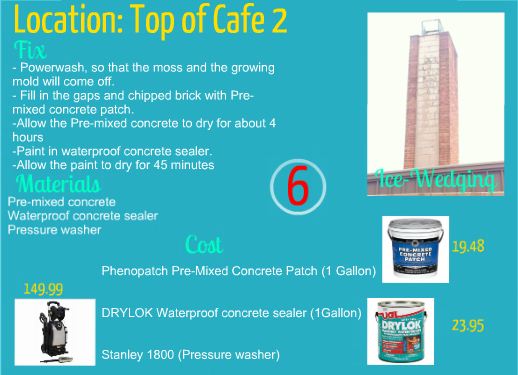Submitted by: Debra Nicholas
School: J.R. Tucker High School
Summary
Groups of students are to identify specific areas on the school campus that are being affected by weathering and erosion (examples include: chemical weathering, mechanical weathering, ice wedging, root pry, wind erosion, and oxidation). They also have to identify steps that need to be taken to fix the problem. The solution is to include materials, costs, and changes to prevent future issues at that location. The groups of students are to create a collaborative presentation using an online tool. Additionally, on a whole-class collaborative Google Map of the school grounds, the students create placemarks to locate the exact site of the weathering/erosion and include a description of the issue, an image, and a link to their presentation.
TIPC Ratings
APPROACHING – For this lesson, groups of students walk around the grounds of the school campus. They are to identify specific areas on the school campus that are being affected by weathering and erosion. They are to find at least 10 different locations with as many different types of issues as possible (examples include: chemical weathering, mechanical weathering, ice wedging, root pry, wind erosion, and oxidation). They are also to take a picture of the site using digital cameras. They also had to do research to find solutions and the cost to fix the problems.
APPROACHING – Students work in groups for this entire project. After locating areas of weathering and erosion around campus, they also have to identify steps that need to be taken to fix the problem. The groups of students are to create a collaborative presentation using an online tool such as Google Presentation, Prezi, Spaaze, or another tool of their choice.
They also collaborate with the whole-class via a Google Map of the school grounds. Therefore, sharing all of their findings and solutions with the class. There was whole-class discussion regarding the proposed solutions and which ones made the most sense to complete.
APPROACHING – Students have to apply critical thinking skills to identify areas of weathering or erosion and also, to identify the steps that need to be taken to fix the problem. Their solution is to include materials, costs, and changes to prevent future issues at that location. Students must justify their decision making as to which problem areas they would repair.
APPROACHING – The groups of students are to come up with a new solution to a real existing weathering or erosion problem. They are to create a collaborative presentation using an online tool such as Google Presentation, Prezi, Spaaze, or another tool of their choice. And, they also create placemarks on a Google Map to locate the exact site of the weathering/erosion and include a description of the issue, an image, and a link to their presentation.




